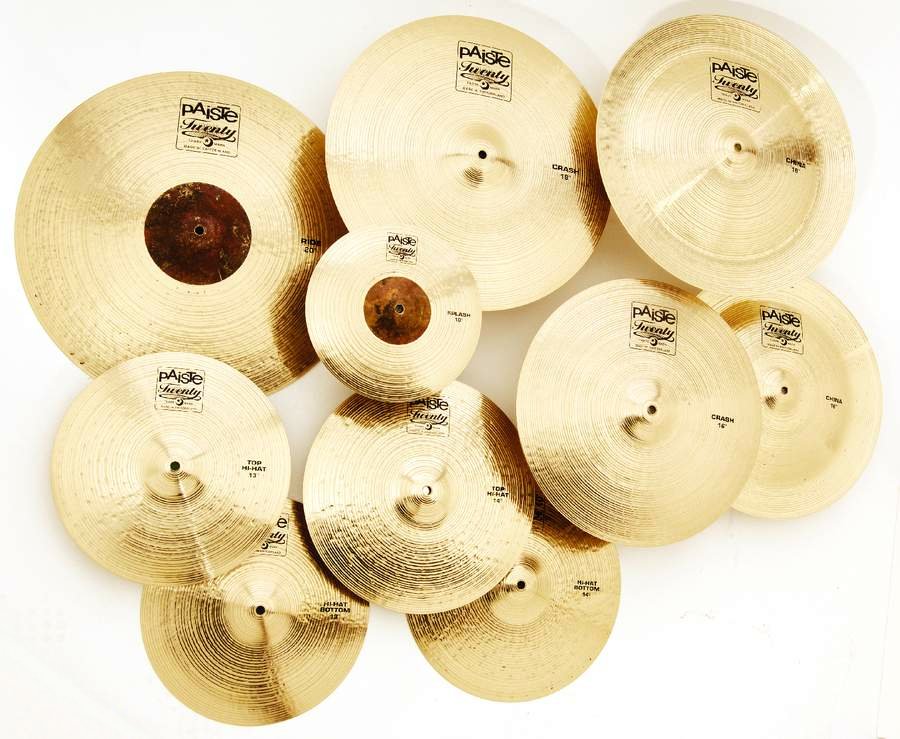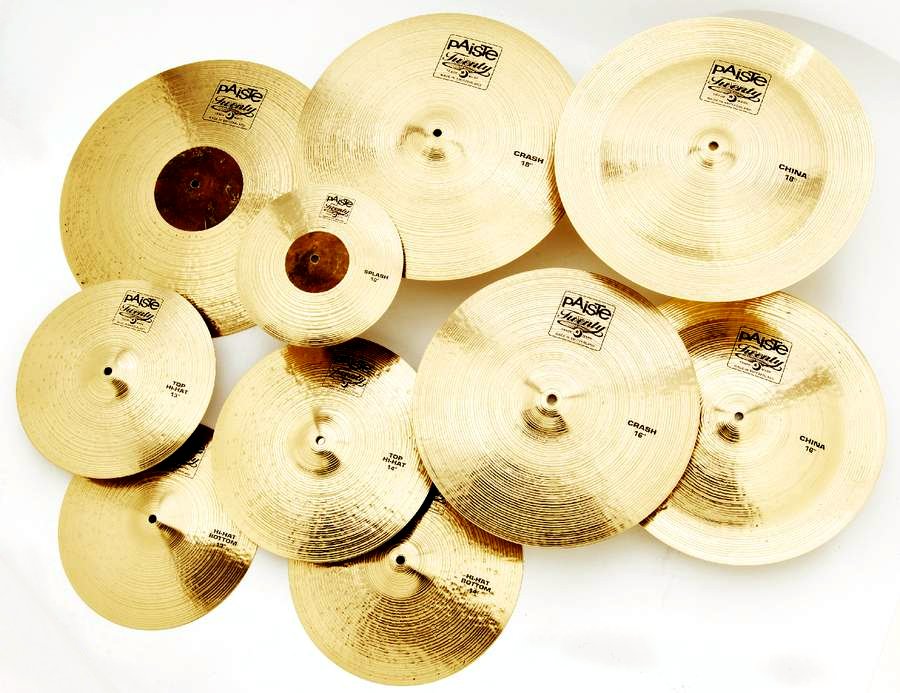MusicRadar Verdict
The Twentys are extremely good cymbals, make no mistake, but while Paiste still makes the best B8 cymbals, when it comes to B20s it's now the novice - and just one among many manufacturers. The Twentys are well-behaved and versatile, they're certainly not bland, but they do not have a great deal of character either.
Pros
- +
A bold departure and new sound from Paiste. Well-behaved and versatile.
Cons
- -
Puts Paiste in the same arena as Zildjian, Sabian, and all the other Turkish-American-style manufacturers.
MusicRadar's got your back



Since 1989, Paiste's top line cymbals have been forged from Paiste's own signature alloy. Paiste never let on what that alloy was exactly but by implication it's certainly not going to be the traditional B20 (or SnBz20) bronze used by the Turkish American manufacturers. So these Paiste Twentys are a bit of a turn-up, heralding Paiste's entry into the B20 field.
So how has it all turned out? The cymbals are certainly beautiful to behold. They're a bright gold which glistens and flashes with the irregular hand hammering and broad lathing to top and bottom. And then there's the attractive box logo. The ride and the single 10" splash differ slightly in that they have unlathed bells.
Intriguing...
As yet the range is limited. There's a 20" and 22" ride, although only the former is on review. This was the cymbal we were most intrigued to try out since we're usually happier with Paiste crashes and hats than rides. Bingo! Maybe the change to B20 is the answer because, as it turns out, this is a really successful, all-round, adaptable ride.
The stick response is clear and solid but is immediately shrouded with a full halo of thick, warm resonance.
Although the cymbal is on the heavy side of medium, when crashed the response is swift and is then gloriously full. Any overtones are pleasant - no nasty, lingering squeals or shuddering hums.
Late on in a recent gig, the top shoulder of the stick caught the unlathed bell of the Twenty ride. It was like clanging Big Ben. Well, it was surprising, jumping out maybe 30 percent louder than intended. There's also quite a big pitch jump up from the normal ride surface to the bell. It is bright and strong.
Contrasting pairs
At present there are just two crashes, two hi-hats and two Chinas. Rather unusually, there was quite a contrast between the members of each pair. For example, when you have 13" and 14" hats in the same series there is usually no great difference beyond the 14s being slightly louder and deeper. But with these, the extra inch of the 14s seems to give them a lot more volume and spread, so they feel more like 15s.
When closed, the normal stick tip sound is brighter, whereas with the 13s it's darker and mellower. When opened up and played hard though, the 13s are bright and cheery. Back to the 14s, the open sound is again significantly rowdier, good for rocking out.
Turning to the crashes, we've always liked Paiste crashes because of their clarity and cut. Some might say that very clarity just means they are lacking in the more complex overtones of Turkish-American cymbals.
So, as with the ride, we were keen to find out whether the change to B20 would lend some of that Turkish pizzazz. The answer is yes. These two crashes - 18" and 16" - have the rounded complexity of a Zildjian but retain the clarity of a Paiste. The 18" also has a smidgen of the oriental about it.
Like the hats, although they sit together well enough, they have their own character, resulting again in a bigger difference than is usual between 16s and 18s of the same series. The 18" has a softer impact, is broader and warmer, while the 16" is quite fast, edgy and bright.
Splash and trash
Rounding out the series, there's a single splash and two Chinas. The 10" Splash is medium-heavy and has plenty of body. It's also still sensitive enough to crash with the tip of your stick, and the unlathed bell is really quite brash, so the cymbal is open to a variety of colourful effects.
Many Chinas can be horribly tinny and thin, but both of these have a welcome depth to them. The 18" is fuller when crashed and has more breadth. The 16" cymbal actually sustains almost as long as the 18", but the initial crash attack is quicker, shorter, harder - and this is particularly useful for fast and brutal punctuations.
Try riding on the 16" and it can sound like a bit of a cheap dinner bell - a shrill 'dink' in fact. But on the 18" there is just enough of a cushion surrounding each tap to make it viable. Although the sound of both cymbals has the expected trashy timbre, the overtones are limited and not overly abrasive.
MusicRadar is the number 1 website for music makers of all kinds, be they guitarists, drummers, keyboard players, djs or producers...
GEAR: We help musicians find the best gear with top-ranking gear round-ups and high- quality, authoritative reviews by a wide team of highly experienced experts.
TIPS: We also provide tuition, from bite-sized tips to advanced work-outs and guidance from recognised musicians and stars.
STARS: We talk to musicians and stars about their creative processes, and the nuts and bolts of their gear and technique. We give fans an insight into the actual craft of music making that no other music website can.
“We were arguing a lot and we were miserable”: How Green Day exceeded expectations with their most ambitious song
"There’s plenty for us guitarists to learn – and ‘less is more’ is the overriding lesson": how to play like George Harrison on The Beatles' Abbey Road
“They didn’t like Prince’s bikini underwear”: Prince’s support sets for the The Rolling Stones in 1981 are remembered as disastrous, but guitarist Dez Dickerson says that the the crowd reaction wasn’t as bad as people think










